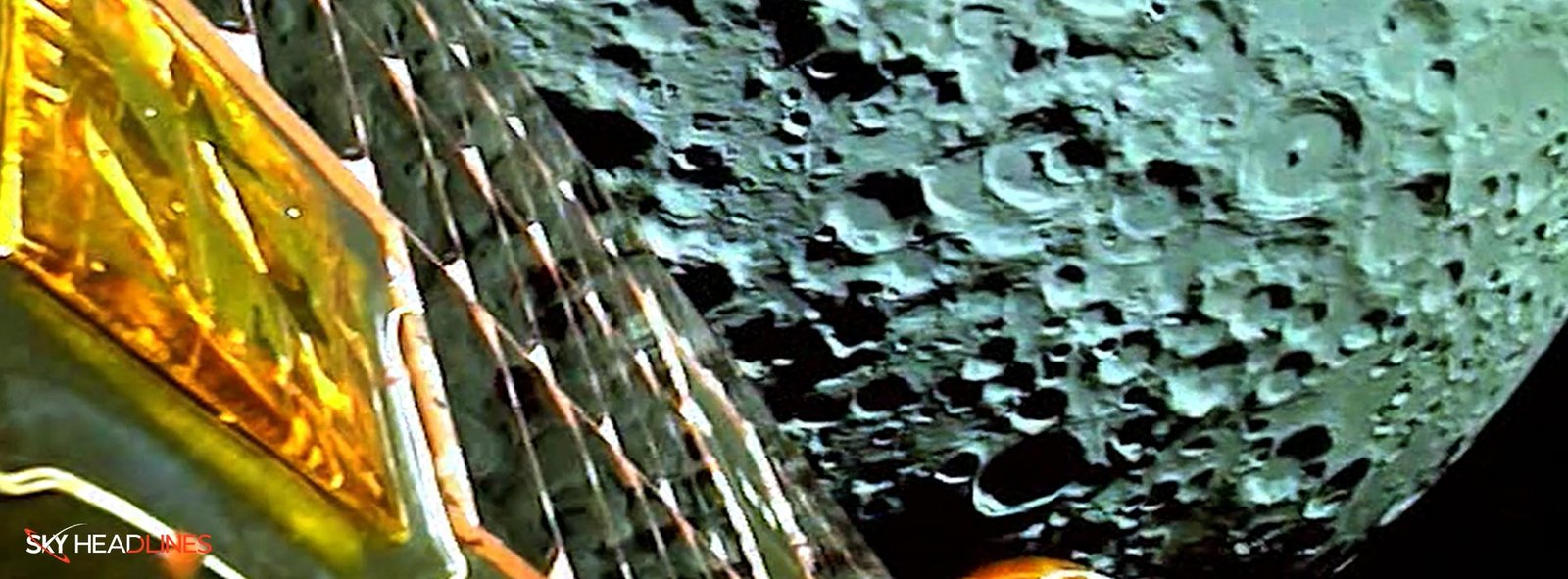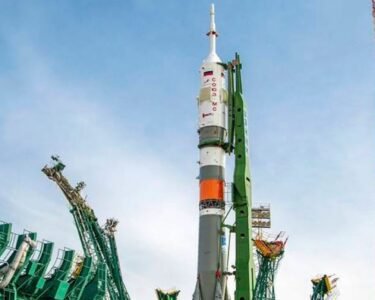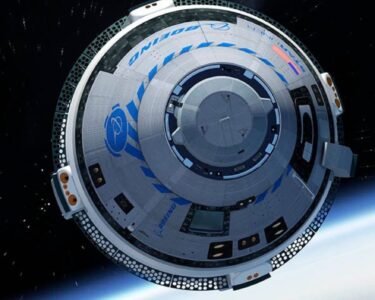India has successfully started Chandrayaan 3 mission. It has been created by priorly completing the Chandrayaan 1 & 2 mission. If you want to know more about its mission, the purpose, the launching date, and the hardworking team behind it. Then let us keep hovering over the following parts!
India Launches Chandrayaan 3 Mission, Aims to Become Fourth Nation on the Moon
The satellite Chandrayaan-3 was launched today (July 14) at 5:05 a.m. EDT (09:05 GMT; 2:35 p.m. local time in Sriharikota) from the Satish Dhawan Space Centre.
The rocket carried the unmanned lander-rover pair. And the aspirations of the most populous country in the world as it shot into the sky. India has started its most ambitious mission to the moon yet.
Following a planned separation from the LVM3 around 16 minutes after launch, Chandrayaan-3 began its fuel-effective voyage to the moon. It will be entering orbit around the Earth. India will soon join the United States, the former Soviet Union, and China as the fourth nation to set foot on the moon. Assuming the remainder of the mission goes according to plan.
If you are further interested in knowing the second attempt of India at a cost-effective lunar landing, investing around 6 billion rupees ($73 million), then continue reading!
India is Aiming for Low-Cost Space Exploration Milestone
The ambitious indigenous mission costs about 6 billion rupees ($73 million). In an era when many countries compete to establish a long-term presence on the moon. Its achievement would assist India’s growing low-cost space exploration ambitions.
ISRO, the country’s premier space agency, professes to be confident of success this time, said:
With today’s launch, India began its second attempt at a soft lunar landing, nearly four years after Chandrayaan-2’s lander-rover combo crashed into the moon due to a software error.
This assurance will be tested during the upcoming month as the spacecraft’s thrusters are repeatedly fired to extend its egg-shaped orbit of the Earth. And increase its speed in preparation for being launched into the moon’s orbit. Once there, careful maneuvers are required to securely position the lander-rover pair close to the moon’s south pole. Which is an area that India hopes to be the first to explore.
Now you are wondering about the precise landing capability near the projected landing region for Russia’s Luna 25 spacecraft, so let’s find out more about it!
India’s Chandrayaan-3 Mission Aims for Precision Lunar Landing at the South Pole
Arun Sinha, a former senior scientist at ISRO, told Space.com, said:
“This mission is most significant in terms of ultimate precise landing capability of [the] Chandrayaan-3 lander on the specified lunar surface”

The landing zone for the mission measures 2.5 miles by 1.5 miles (4 by 2.5 kilometers). And it is located at 69.367621 south latitude and 32.348126 east longitude. It is also near the projected landing region for Russia’s Luna 25 spacecraft, slated to launch in August.
The lunar south pole, a hotspot for space research, is believed to contain large amounts of water ice that might be harvested for rocket fuel. A tantalizing location for moon outposts would be near the south pole because lunar water ice would also be necessary for life support.
Moreover, the challenges that have been faced on the south pole were challenging; let’s know more about these difficulties!
Chandrayaan 3 Mission & Overcoming Challenges of the South Pole Landing
Chandrayaan-3’s arrival, anticipated for August 23 or 24, would be historic; earlier missions that succeeded landed near the moon’s equator, while those that failed aimed to reach the south pole.
The south pole regions receive sunlight at low angles, and the lengthy shadows there make safe landing difficult. In contrast to more approachable equatorial areas, where sunlight is abundant for solar-powered spacecraft, the south polar regions have long shadows.
In addition, the legs on the lander, named Vikram (Sanskrit for “valor”), have been strengthened to help it survive a slightly high landing speed. And the area where the spacecraft can touch down has also been significantly widened to allow some room for error and ultimately increase chances of success, ISRO Chairman S. Somanath said last week during a press briefing.
Moon is one of the go-to points for scientific discoveries, and the Pragyan rover is all set for it! Let’s know how.
Pragyan Rover Set to Explore Lunar Surface, Extending Possibilities for Scientific Discoveries
Providing the landing is successful, a six-wheeled rover called Pragyan (Sanskrit for “wisdom”) will disembark from Vikram and move onto the lunar surface under the guidance of cameras. Its arsenal includes a spectrometer for examining lunar rocks and dirt and a laser-induced spectroscope for zapping targets and determining their chemical makeup.
The lander and the rover are planned to run for one lunar day (about two weeks on Earth), from the moon’s rising to set.
While the solar-powered robotic duo is not expected to survive a frigid night on the moon, “there are faint chances of extra-efficient battery charge,” Sinha told Space.com. “If this is good, another 14 [Earth] days might be available.”
The following part of the blog is solely based upon the frequently asked questions about this mission and its purposes!
What is the Aim Behind Chandrayaan 3 Mission?
Chandrayaan-3, the current mission, is primarily an opportunity to try again after the previous endeavor of landing a robotic spacecraft on the moon’s surface resulted in a crash and a crater almost four years ago. This undertaking comes when there is a revived enthusiasm for lunar exploration.
Potential Reaching Time & Point of Chandrayaan 3:
The LVM3 M4 vehicle effectively propelled Chandrayaan-3 into its designated orbit. The spacecraft is projected to require approximately a month to travel from Earth to the moon, with an anticipated landing scheduled for August 23.
Why the Chandrayaan has been only Sent to Moon?
Following Chandrayaan-2, this mission aims to showcase a range of capabilities, including achieving lunar orbit, executing a gentle landing on the moon’s surface with a lander, and deploying a rover from the lander to investigate the lunar terrain.
More About Team & Project Director Details of Chandrayaan 3 Mission:
Veeramuthuvel, the project director of Chandrayaan 3, expressed his gratitude to all the stakeholders who played a part in the mission’s success during the event. Veeramuthuvel also mentioned that the eagerly anticipated soft-landing phase marks the commencement of our voyage to the moon. The spacecraft’s progress will be closely monitored from Bengaluru.
Why are Chnadrayaan Missions Happening? Let’s Find Out the Core Purpose!
Chandra has been specifically engineered to detect X-rays emitted by regions in the universe with high energy, including remnants of stellar explosions. Its exceptional sensitivity enables comprehensive black holes, supernovas, and dark matter investigations. Chandra has significantly advanced our comprehension of the universe’s origin, evolution, and ultimate fate through these studies.
Were Chandrayaan 1 and 2 Successful?
The estimated orbital period was approximately 11 hours. Following the successful execution of this mission. India achieved the distinction of becoming the fifth nation to place a vehicle in lunar orbit. The initial Lunar Orbit Reduction Manoeuvre of Chandrayaan-1 took place on November 9, 2008, at 14:33 UTC.
The second mission, Chandrayaan-2, commenced its journey on July 22, 2019, and successfully entered lunar orbit on August 20, 2019. On September 2, 2019, the Vikram Lander was detached. While in a lunar polar orbit approximately 100 kilometers above the moon’s surface.





